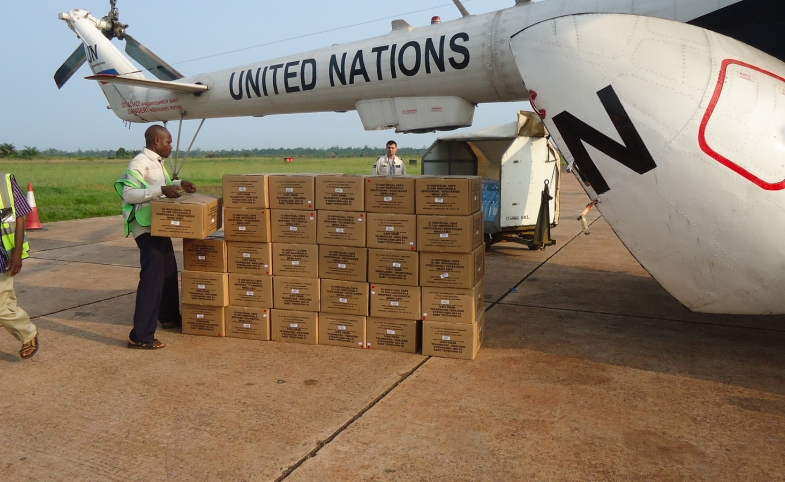On International Migrants Day 2014 (December 18), Director General of the International Organization for Migration (IOM) William Lacy Swing wrote in a New York Times op-ed that 2014 was “the deadliest year for migrants on...
KEEP READINGThe CPD Blog is intended to stimulate dialog among scholars and practitioners from around the world in the public diplomacy sphere. The opinions represented here are the authors' own and do not necessarily reflect CPD's views. For blogger guidelines, click here.

Managing the UN Brand
“We have one of the best brands in the world,” said U.N. Under Secretary Cristina Gallach in a briefing at the USC Washington D.C. Center last week.
“It tells a lot of different things to different people,” she explained. “If you are in the country with our peacekeepers, you know what they are doing for you. If you are in a country that is a major contributor to [solving] problems, lot of countries in Europe for example, they like the brand. So everybody finds not just something, but a lot in the brand.”
But cultivating such a prominent global brand requires effort:
“We have to be responsible for maintaining and nurturing the brands,” Gallach said. “In fact I made a presentation to the UN heads of agencies and programs, based on mobilizing their awareness of helping the brand. I think this is crucial.”
And keeping control of the U.N. brand can be a challenge, she added, since her office publishes in print, broadcast and social media, in six languages, across 63 regional offices, and serving agencies as diverse as UNICEF and U.N. peacekeepers.
“We have to work very, very hard on coordination,” she said. “The role of coordination is a critical one.”
Gallach convenes a regular meeting, supplemented by an annual gathering of communications specialists across the U.N.
“The UN Communication Group, with the directors of the communications of the different agencies of the program, needs to meet at least once a year,” she said. “We last met in Paris, [including] the chair of the group, the UN Population Fund, UNDP the development team, UN Human Rights, the World Food Program. We were about 40, or even more, people meeting there.”
...Keeping control of the U.N. brand can be a challenge, [Gallach] added, since her office publishes in print, broadcast and social media, in six languages, across 63 regional offices, and serving agencies as diverse as UNICEF and U.N. peacekeepers.
On one issue alone, climate change negotiations, Gallach noted her office must coordinate news reports with the UN Environment Program in Nairobi, UN climate-related offices in Bonn and Paris, and sometimes other agencies, including the World Bank and the International Monetary Fund.
During a crisis, this becomes even more challenging. As an example, she described responding to Ebola outbreak by convening a global “emergency communications task force” to assure more consistent messaging about U.N. relief efforts.
“With all the colleagues in charge of communications, with the World Health Program, the World Bank, Development, of course the office of the Secretary General, everybody had a daily 8:00 call on messages, where to hear the messages, how to respond the messages,” Gallach said. “You have to structure the communication. So that is a way to preserve the brand, and to communicate what is been done.”
She also noted the promise and difficulties of working with social media; more about that here.
Gallach made her remarks immediately following a ceremony marking the 70th anniversary to the day of the U.S. Senate ratifying the U.N. Charter at the National Archives, across the street from the USC Washington center.
Additional reporting by Yingqian Chen.
Photo reprinted courtesy MONUSCO/James Botuli, via Flickr.
Visit CPD's Online Library
Explore CPD's vast online database featuring the latest books, articles, speeches and information on international organizations dedicated to public diplomacy.
POPULAR ARTICLES
-
November 3
-
November 5
-
November 13
-
November 25
-
November 17
Join the Conversation
Interested in contributing to the CPD Blog? We welcome your posts. Read our guidelines and find out how you can submit blogs and photo essays >.













